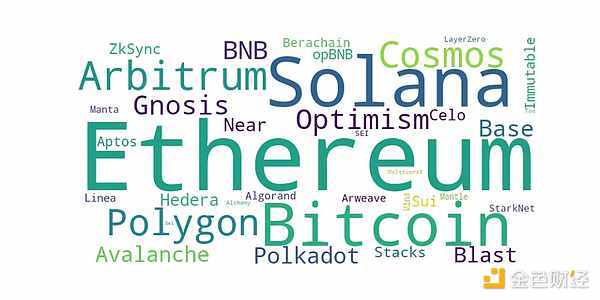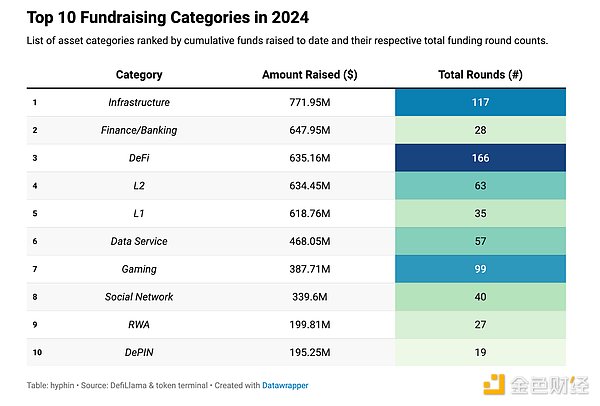Author: hyphin Source: On Chain Times Translation: Shan Ouba, Jinse Finance
The seeds sown last year amid uncertainty are finally starting to bear fruit. Retail investors have shown their cards to everyone, while private capital has remained tight-lipped. What do they have in hand? What outcomes are they betting on? They have been cautious since they were hurt by over-enthusiasm the last time Bitcoin traded at these prices. Has the strategy changed this time?
introduce
Regardless of market conditions, funding will never completely stop because the industry’s innovation engine is efficient enough to reward those who power it. However, positivity is largely dependent on forecasts. Historically, favorable conditions tend to be attractive for early-stage capital because the potential rewards far outweigh the associated risks. For many onlookers, the increase in these for-profit entities suggests that the party has already begun or is about to begin. It is clear that we have been in a bull market for a long time and the fort is close at hand. With this in mind, one can expect cumulative funding to exceed or at least approach the standards set by the previous cycle.
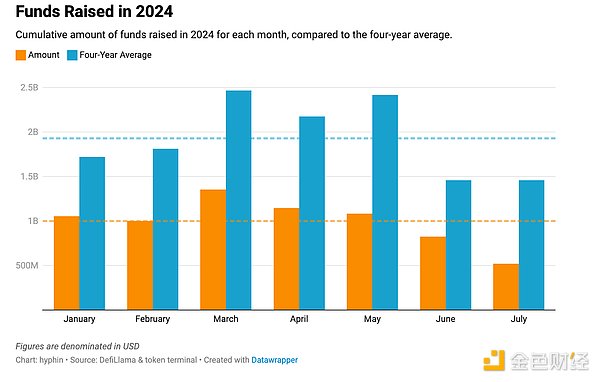
It’s safe to say that these optimistic expectations are backed by reality, as this year’s monthly metrics pale in comparison to the four-year average. Compared to 2018, 2021, and 2022, these numbers are just a drop in the ocean created by the zero-interest, cheap money era. While the reported financials aren’t anything to write home about, they do show that the opportunities to secure large amounts of initial startup funding have significantly decreased as we transition to the new normal. This doesn’t mean that those in the office have let their guard down, as activity appears to have decreased. On the contrary, the number of investment rounds that have occurred is actually above average.
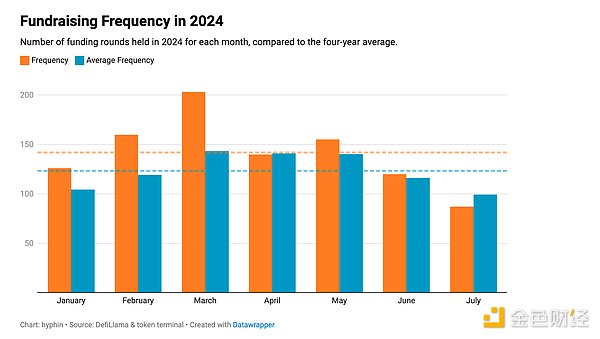
Prior to Bitcoin’s all-time high, the pace of funding announcements drafted accelerated significantly, demonstrating strong participation in behind-the-scenes bootstrapping. This surge was primarily driven by OTC participants entering the market en masse and participating in more rounds than usual. However, activity tapered off as summers have historically been relatively quiet.
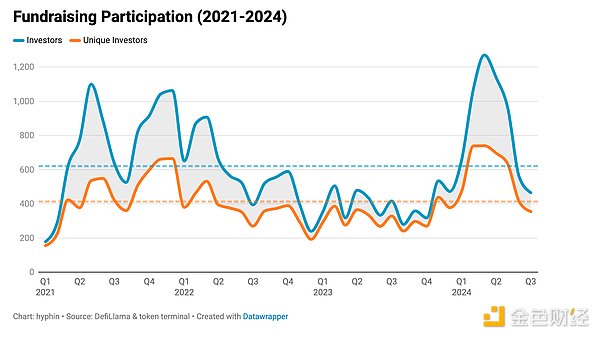
Granted, founders are certainly not receiving as much in average salary as they once did, forcing entrepreneurs to be resourceful and manage their burn rate wisely in order to successfully get their creations to the finish line.
Emotion/positioning
Understanding the current funding landscape, we can confidently infer that VCs anticipate some upside in the unforeseeable future. While the size of the bet doesn’t instill much confidence, risk appetite might. Companies can raise funds at various stages of development, each with its own considerations and industry-standard amount ranges.
To learn more about general knowledge and terminology, we recommend that you check out our previous articles on the topic before continuing.
By categorizing investment types according to their individual characteristics, we can assign them a rough risk score. This allows us to roughly measure the overall risk tolerance of all vested interests and thus determine confidence in the continuation or change of trends by quantifying their collective propensity to engage in speculative activity.
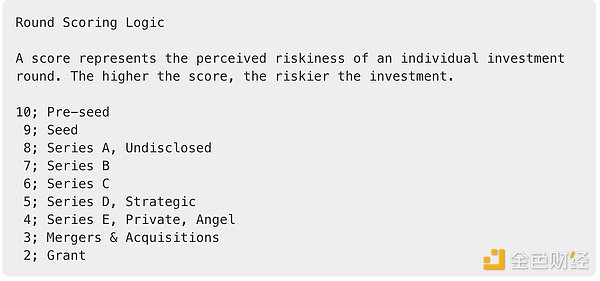
Sentiment in our illustration will be represented by a composite metric calculated by adding the weighted frequency-based and volume-based scores using the values we established previously.

A lower composite index indicates a more conservative stance, while a higher composite index indicates a more aggressive stance. Shifts between these stances can be determined by whether the value intersects the mean (marked on the chart as a green dashed line).
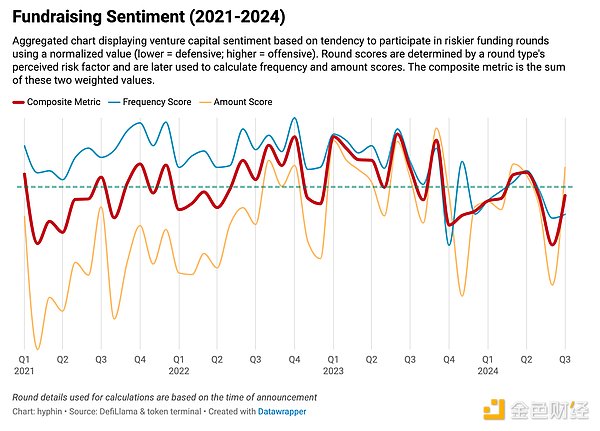
While this chart is a bit overwhelming, it provides an interesting perspective on how positioning and investment approaches have evolved over time. In the last cycle, low dollar amounts and high frequency scores led to relatively modest composite metrics as a large amount of capital was invested primarily in high-valuation series rounds. Many well-capitalized firms made significant bets on the sector through infrastructure and institutional products. This sentiment began to shift at the end of the rally, with riskier early-stage rounds becoming more prominent as a greater emphasis was placed on incubating emerging projects while maintaining conservative commitments. A change in rhythm can be seen around the last quarter of 2022, when large individual rounds were conducted during the FTX crash and the future of cryptocurrencies was questioned. After the catastrophic capitulation and market bottom formation, private capital ventured significantly increased financial support for developing companies until the fourth quarter of 2023. Subsequently, larger private placements and series strategic rounds took center stage. This trend has continued for most of this year, with frequency scores declining despite record activity. This suggests that investors are being more cautious and selective in their allocations, preferring safer investments.
Funding Analysis
This year has been tough for most Altcoin, with only a handful of Altcoin in a few categories outperforming the main asset. Even those who picked up coins at a discount were not immune, as the downside potential for speculative investments has proven to be nearly bottomless. Choosing the right niche is more important than ever. To get a full picture of where the money is flowing and assess the most sought-after narratives, we can map the amounts raised to their respective categories. For consistency, all publicly traded Bitcoin mining companies have been excluded from the dataset. It’s worth noting that not all raises report numbers, so the actual composition may be slightly different.
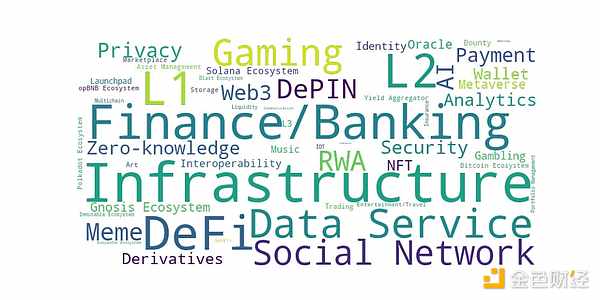
The rise of social networks
Ecosystem Contribution
